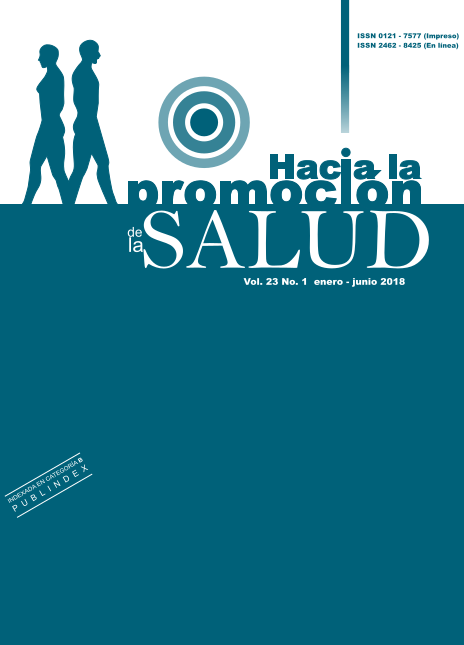Authors
Abstract
Objectives: To provide empirical evidence to the strategy of promoting reading in their restorative dimension from the theoretical conceptions of Michèle Petit. Materials and methods: Qualitative, descriptive, retrospective study based on the records of the interventions conducted by the Reading Promotion Team between August 2014 and August 2016. The strategy was carried out through three modalities: free book loan, reading aloud and artistic productions, in an admission context in units 5 and 6 of the Medical Clinic Services at Hospital General de Agudos Dr. Enrique Tornú. The registration tool is participative, open and systematic. The technique used for registration and standardization is the vignette which aims to reflect what was expressed by the participants. Results: The reparative effects of the reading promotion strategy are highlighted in two dimensions: the development of an intimate space within a public space and the subjectivation of the process. The results were reached from the categorization and analysis of the concepts developed by Michèle Petit. Conclusions: it was possible to provide empirical evidence to the reading promotion strategy in hospital admission context. The vignette technique is seen as pertinent for this strategy.
References
2. Petit M. La lectura reparadora. En: Lecturas: del espacio íntimo al espacio público. Ciudad de México: Fondo de Cultura Económica; 2001. p. 67-84.
3. Petit M. Lecturas: del espacio íntimo al espacio público. Ciudad de México: Fondo de Cultura Económica ; 2001.
4. Petit M. Saltar al otro lado. En: El arte de la lectura en tiempos de crisis. Ciudad de México: Océano; 2009. p. 60-75.
5. Bórquez MJ., González L., Kielmanovich M., Martínez A., Salinas C., Varela D. Promoción de las lecturas, una apuesta a la salud. Salud y Población. 2012; 7 (1): 69-73.
6. Barilá L, Campero MJ, Cavaro MF, Cusi D, Figueroa A, Marques de Paiva L, et al. Promoción de las lecturas con personas mayores internadas en un hospital general de agudos. Neurama. 2016; 3 (1): 10-15.
7. Serradas-Fonseca M. El valor terapéutico de la lectura en el medio hospitalario. Aula. 1999; 11 (1): 233-245.
8. Deberti-Martins C. Leer: un derecho… también en el hospital. Información, Cultura y Sociedad. 2011; 25 (1): 145-152.
9. Ceribelli C, Nascimento LC, Pacífico-Soraya MR, García de Lima RA. La mediación de la lectura como recurso de comunicación con niños hospitalizados. Rev Latino-Am. Enfermagem. 2009; 17 (1): 81-87.
10. Correa P. Programa de lectura en ambientes hospitalarios “Palabras que acompañan”. Primer Congreso Internacional de Pedagogía Hospitalaria en Colombia. Colombia. 2015.
11. Taylor SJ, Bodgan R. Introducción a los métodos cualitativos de investigación. Madrid: Dykinson; 1994.
12. Schütz A. Formación de conceptos y teorías en las ciencias sociales. Estudios sobre teoría social. Buenos Aires: Amorrortu; 1954.
13. Guber R. El salvaje metropolitano. Reconstrucción del conocimiento social en el trabajo de campo. Buenos Aires: Paidós; 2004.
14. Barter C, Renold E. The use of vignettes in qualitative research. Social Research Update. 1999; 25 (1): 1-4.
15. Yáñez-Gallardo R, Ahumada AH, Rivas-Aguayo E. La técnica de viñeta y su aplicación en investigaciones en enfermería. Cienc Enferm. 2012; 18 (3): 9-15.
16. Guido R. Proceso creador y dimensión lúdica en el arte. En: Matoso E, editor. El cuerpo incierto. Buenos Aires: Letra Viva; 2006. p. 135-164.
17. Tatti V, Petit M. La lectura construye a las personas, repara, pero no siempre es un placer. Revista de Cultura Ñ. 2009. Disponible en: http://edant.revistaenie.clarin.com/notas/2009/06/29/_-01948893.htm.
18. Guglielmo-Cavallo R, Chartier R. Historia de la lectura en el mundo occidental. Madrid: Taurus; 1997.
19. Menéndez E. Modelos de atención de los padecimientos: de exclusiones teóricas y articulaciones prácticas. Ciência & Saúde Coletiva. 2003; 8 (1): 185-207.
20. Testa M. El hospital visto desde la cama del paciente. Salud, Problema y Debate. 1993; 5 (9).
21. Salaberria R. Entrevista a Michèle Petit, Antropóloga, investigadora de la lectura. Imaginaria. Disponible en: http://www.imaginaria.com.ar/02/3/petit.htm.

 PDF (Español)
PDF (Español)
 FLIP
FLIP


























